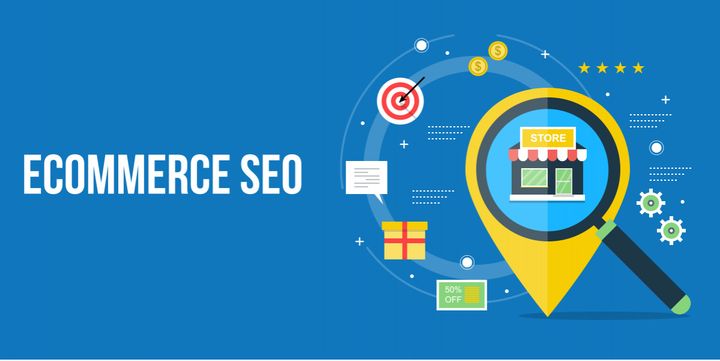
How to Master E-commerce SEO: The Process for Growth
E-commerce SEO is the practice of optimizing an online store to increase its visibility and rankings in search engine results pages (SERPs). While traditional SEO focuses on driving traffic to a website, e-commerce SEO has a more specific goal: attracting potential customers who are actively searching for products or services to buy. It involves a strategic blend of technical improvements, content creation, and promotional activities tailored to the unique needs of an online retail business.
The Importance of a Smart Optimization Strategy

In the modern digital landscape, the relationship between search engine optimization and e-commerce is not just complementary—it is symbiotic. A strong SEO strategy is not an optional marketing activity but a core business function that is essential for sustainable, long-term growth.
Who It Affects
E-commerce Businesses: From small, independent brands to large online retailers, every business that sells products online is directly affected. A strong SEO strategy can be the difference between a thriving store and a failed venture.
Digital Marketers: Professionals in this field must understand the nuances of e-commerce SEO to provide effective, results-driven strategies for their clients.
Consumers: A well-optimized e-commerce site provides a better shopping experience. It means consumers can find the exact products they want quickly and easily, without having to sift through irrelevant search results.
Problems It Solves
Visibility and Organic Traffic: In a crowded marketplace, the most significant challenge is standing out. SEO ensures that an online store appears prominently for relevant searches, providing a consistent stream of free, organic traffic. This traffic is highly valuable because it comes from users who have a clear commercial intent.
Cost-Effectiveness: Unlike paid advertising (PPC), which requires a continuous budget and stops driving traffic the moment the campaign ends, SEO provides a long-term, compounding return on investment. The traffic it generates is essentially free, allowing businesses to re-allocate their budgets to other areas like product development or customer service.
Credibility and Trust: Appearing on the first page of search results for important keywords builds a high level of trust with consumers. They perceive top-ranked sites as credible and authoritative sources, which increases the likelihood of a purchase.
Targeted Customer Acquisition: SEO is highly effective at attracting qualified leads. By optimizing for specific keywords and phrases, an e-commerce site can attract visitors who are already deep in the buying funnel, leading to higher conversion rates and a healthier bottom line.
Recent Updates and Trends
The world of SEO is in constant flux, and the e-commerce landscape is changing with it. Over the past year (late 2024 to mid-2025), several key trends have reshaped how businesses approach their online visibility.
The Influence of Generative AI in Search: Search engines are increasingly using generative AI to create summaries and direct answers, sometimes in "AI Overviews," which can sit above traditional organic listings. For e-commerce, this means businesses must optimize not only for keywords but also for conversational queries and specific questions a customer might ask. Providing clear, concise, and helpful product information and FAQ sections is now more critical than ever to appear in these AI-generated results.
Continued Emphasis on Core Web Vitals: Google’s algorithm updates in 2024 and 2025 have doubled down on the importance of user experience (UX) as a ranking factor. Metrics known as Core Web Vitals—including Largest Contentful Paint (LCP), Interaction to Next Paint (INP), and Cumulative Layout Shift (CLS)—directly measure a site's loading speed, responsiveness, and visual stability. An e-commerce site that fails to provide a fast and seamless experience will not only lose customers but also see its rankings drop.
E-E-A-T (Experience, Expertise, Authoritativeness, and Trustworthiness): The principles of E-A-T have become even more critical, with an added emphasis on "Experience." For an e-commerce site, this means more than just a good product description. It involves showcasing genuine firsthand experience with products, featuring expert reviews, and building a community of satisfied customers. Trustworthiness, in particular, is paramount, requiring transparent pricing, clear return policies, and a robust customer support system.
The Rise of Video and Visual Search: With the growth of platforms like TikTok and the increasing use of tools like Google Lens, consumers are discovering products through visual means. This has made visual SEO a major focus. E-commerce businesses must now optimize their product images and video content for search by using descriptive alt text, high-quality images, and relevant video descriptions to capture traffic from these evolving search behaviors.
Laws and Policies
The intersection of e-commerce and SEO is subject to various laws and regulations that primarily focus on data privacy, consumer protection, and fair business practices.
Data Privacy Regulations: Laws like the General Data Protection Regulation (GDPR) in Europe and the California Consumer Privacy Act (CCPA) in the United States directly impact how e-commerce businesses can track users for SEO analytics. They mandate that websites must obtain explicit consent from users before collecting their data, which includes the use of cookies for tracking. This means that a compliant SEO strategy must be built on a foundation of transparency and user privacy.
Consumer Protection Acts: In many countries, strict laws are in place to ensure fair dealings with consumers. In India, for example, the Consumer Protection (E-commerce) Rules, 2020, and its subsequent amendments mandate that e-commerce entities must provide accurate and complete product information, including the total price, shipping fees, and country of origin. An SEO strategy that focuses on accurate and transparent product descriptions is therefore not just a best practice—it is a legal requirement.
Advertising and Fair Trade Laws: These regulations prevent misleading claims and deceptive practices. For e-commerce SEO, this means that keyword-stuffed or dishonest product descriptions are not only bad for search rankings but can also lead to legal penalties. A good SEO strategy for an e-commerce site must be grounded in authenticity and factual content.
Tools and Resources
To implement an effective e-commerce SEO strategy, a variety of powerful tools and resources are available to help businesses research, analyze, and optimize their online stores.
SEO Platforms: These all-in-one tools are essential for everything from keyword research to competitor analysis.
Semrush: Offers features for keyword tracking, site audits, and competitor analysis.
Ahrefs: Known for its backlink analysis capabilities, crucial for off-page SEO.
Moz: Provides a suite of tools for keyword research and on-page optimization.
Analytics and Performance Tools:
Google Analytics: Provides detailed insights into user behavior, traffic sources, and conversion rates, allowing businesses to measure the success of their SEO efforts.
Google Search Console: An indispensable tool for monitoring a site's performance in search results, identifying technical errors, and submitting sitemaps.
Lighthouse: A free, open-source tool from Google that helps audit a website's performance, accessibility, and SEO health, particularly its Core Web Vitals scores.
E-commerce Platform Plugins and Apps: Most major e-commerce platforms offer a wide range of SEO-specific plugins to simplify optimization.
For WordPress/WooCommerce, plugins like Yoast SEO and Rank Math help with on-page optimization.
For Shopify, numerous apps are available to help with image optimization, broken link checking, and structured data.
Structured Data Validators: Tools like Google's Rich Results Test are crucial for ensuring that your product pages are correctly marked up with schema, which helps search engines understand and display product information like price and reviews.
Frequently Asked Questions
What is the most important part of e-commerce SEO?
The most important part is keyword research paired with technical SEO. Keyword research ensures you're targeting terms customers are actually using to find products, while technical SEO ensures your site is fast, crawlable, and easy for both search engines and users to navigate.
How long does it take to see results from e-commerce SEO?
E-commerce SEO is a long-term strategy. It can take anywhere from 6 to 12 months to see significant results in terms of organic traffic and sales. The timeline depends on the level of competition in your niche, the quality of your content, and the authority of your website.
Is a blog necessary for an e-commerce site?
Yes, a blog is highly recommended. It helps attract organic traffic from informational searches and builds trust and authority. By creating content that answers common customer questions and provides product-related guidance, a blog can drive traffic that you can then convert into sales.
What is the difference between SEO and PPC?
SEO (Search Engine Optimization) focuses on getting free, organic traffic from search results. It is a long-term strategy that builds brand authority and visibility. PPC (Pay-Per-Click) is a paid advertising model where you pay for each click on your ad. It provides immediate, but often more expensive, traffic and is a short-term strategy.
Conclusion
In 2025, a successful e-commerce business cannot exist without a robust SEO strategy. The digital marketplace has evolved into a hyper-competitive arena where visibility is the ultimate currency. By focusing on smart, data-driven optimization—from technical performance and user experience to the ethical principles of E-E-A-T—online retailers can build a sustainable foundation for growth. SEO is not just about rankings; it's about building a digital brand that is trustworthy, authoritative, and always there when the customer needs it, driving not just clicks but explosive, long-term growth.










